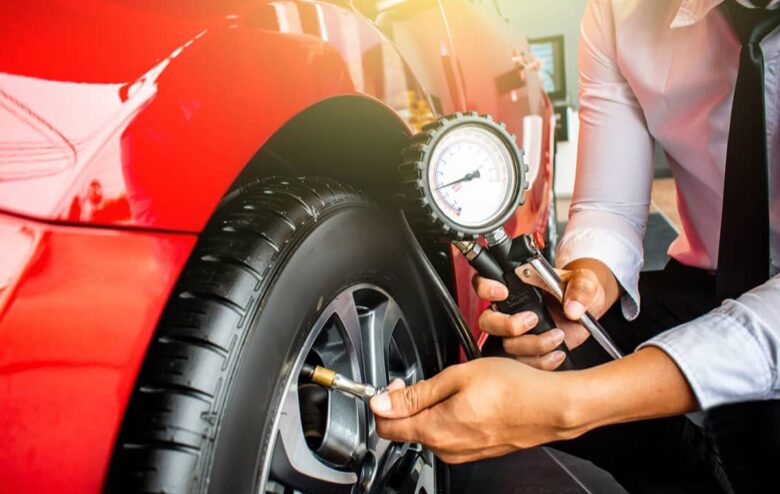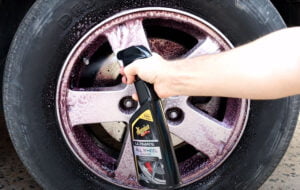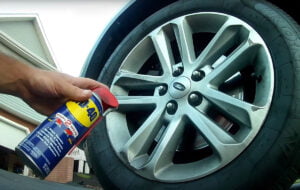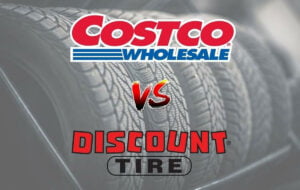You will see maximum safety pressure for your tires on the tire’s sidewall. However, the recommended tire pressure is specific to the vehicle and available in two main areas. First of all, the suggested tire pressure will always be found in the user manual. Second, most vehicles come with the recommended pressure on the door jamb sticker.
It would be best if you did not fill your tires to maximum tire pressure, as shown on your tire’s sidewall. as it can result in structural failure of the tire. Such a failure will lead to a blowout. Unless you are off-roading, you need to keep your tires at the recommended tire pressure of your vehicle.
Why You Should Avoid Filling Your Tire to The Maximum PSI?
It is very dangerous to fill your tires with maximum pressure. The main reason can be the risk of a blowout. Even coming near that threshold can be devastating. Tires will be heated while in use, and the pressure inside the tire boosts. It can be a result of a process known as thermal expansion.
When the tire faces thermal expansion, it can increase the pressure inside, which is way more than the maximum PSI. In the end, it will result in the tire popping like an overinflated balloon, known as a blowout. The over-inflation of the tire can result in the most dangerous problem: blowout. However, there are a few other problems that can also cause discomfort as well as result in accidents.
Why Do Over Inflated Tires Result in a Bumpy Ride?
It is hard for some of us that the tire is part of your vehicle’s suspension system. The air inside works as a cushion that can absorb impacts caused by an uneven road surface. Many people who use low-profile tires experience bent rims. This is because when a low-profile tire hits a pothole, it fails to provide a cushion to secure the rim.
If the tire’s sidewall is very rigid, it can be offset by it, but the people inside the vehicle will experience a little bump. You can also face it if you over-inflate your tire. If the tire is too high PSI, it cannot cushion the blow from a bump or pothole.
Additionally, the side wall becomes rigid due to the high air pressure in the tire, stopping it from flexing. It can result in a blowout. As the tire cannot bend or flex, the force and mass of the vehicle move directly to the edge of the pothole, or a bump can cause the tire’s rubber to tear or crack.
Why do overinflated tires result in bad handling or unsafe braking?
Your tires are used to keep you on the road and reaching your destination. It uses surface tension to do it. The more the tire touches the road surface, the better your traction gets. Unluckily, the tire bulges out on the centerline if it is overinflated.
If you have overinflated tires, a thin centerline of rubber keeps you attached to the road. This results in worse handling and less stopping power. It also translates to the fact that with time, the tire will get increased wear down the center, drastically decreasing the life of your tires.
Why are you prone to getting a puncture with higher levels of PSI in your tires?
You will feel every bump and dip due to the same cause. There is a high chance that you will get a puncture. The tire is not able to give way because of the higher pressure. This makes the process easier for a puncture. You can understand it by trying to pop a semi-inflated and fully inflated balloon. The fully inflated balloon will pop way earlier than the semi-inflated balloon does.
What Should Your Tire Pressures Be Maintained At?
The most secure way with tire pressure is to use the recommended PSI values on the door jamb sticker. However, there can be some changes to this rule as well. These values are designed for a specific tire when the manufacturer sets it. Let’s assume the tire the manufacturer is working on contains a maximum PSI of 35, and their recommendation for you is to stick to 32 PSI for the fronts and 28 PSI for the rears.
When you need brand new tires, you purchase the ones you like, and you come to know they have a maximum PSI of 44. It is not that bad, right? If you are still within the maximum limit, no, that is not true, 32 PSI on a tire with a maximum of 35 PSI will not be suitable for the same on a tire with a max of 44 PSI. The correct pressure for a tire with a max of 44 PSI will be 41 PSI on the front and, most likely, 36 PSI on the rear.
Furthermore, pickup trucks have higher PSI recommendations for the rear than the front. They can manage the weight in the back or support the importance of a trailer. However, the back can bounce slightly even with no load, especially when it moves on gravel or dirty roads. That is why it will be wise to reduce the PSI from suppose 72 PSI to 50 PSI. Just remember that you need to adjust the pressure before you put a load on it again.
What is the highest safe tire pressure you can use?
You are good to go if you remain within the range the manufacturer recommends. However, if you want to move or tow something heavy, you need to increase the PSI, or there is no specific recommendation, you can always use the max PSI as a rough idea.
The general idea is to use 75% of the total maximum pressure shown on the tire. If you have a tire of 50PSI, the more pressure you want to use it safely will be 37.5PSI. If it is easier to get this number, take max PSI 50 as an example and time it by .75. You can also reach as high as 90% of the maximum, but the safe side will be to stay close to the suggested manufacturer’s values.
Final Words
Filling your tires to the maximum pressure is not a good idea. Not only will it add a lot of problems, including bad tire degradation and uncomfortable riding, but it can be extremely dangerous for you, too. The ideal step is to match your vehicle manufacturer’s PSI recommendations as closely as possible. The perfect time to check and adjust your tires’ PSI is early in the morning, as they are still cold.



